Native Plant Gardening
In this project, I created a space in my backyard specifically for growing plants that are native to the southern Quebec and northeastern American regions. These plants are adapted to the unique climate of this area. This means that they are fairly hardy and play an important role in supporting local ecosystems. Read on to see how I did it and what I learned along the way!
Jump to a section:
- Winter: Origins of the project
- Spring: Selecting, sourcing, and planting
- Summer: Digging deeper into native plant gardening
- Fall: Results of the garden
- Profiles of select native plants
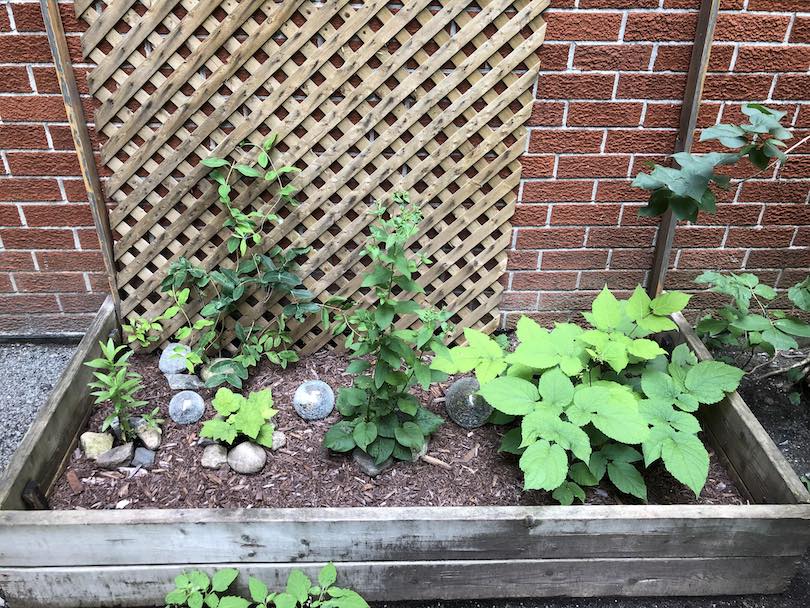

Winter: Origins of the project
In the summer of 2022, I moved into my current apartment which has a private backyard and garden. While it was too late to start planting at that time, I thought it would be nice to do something with the space come spring. Of course, that meant learning how to garden.
Over the winter I browsed resources online, especially Montreal's Espace pour la Vie where I found a lot of intriguing content about gardening with native plants. This was appealing to me as a beginner gardener, as the plants would already be adapted to the climate in southern Quebec, making them pretty easy to grow (or, hard to kill). And as an individual, I couldn't go wrong with an activity that directly supports local ecosystems, especially in the city where urban development threatens or even wipes out native species.
As my research continued, I became curious about the plants that were already growing in my backyard the summer I moved in. Presumably, they were grown by previous tenants or just put down roots through natural dispersal. I ran some photos I had taken through a plant identification app, and there were indeed some native plants in my backyard! This was very encouraging as it meant I had a foundation to build up from.
Spring: Selecting, sourcing, and planting
Closer to the beginning of spring (in Montreal, it's always hard to tell), I began more concrete planning. The major consideration for the garden was the light conditions of my backyard. It's north-facing, and pretty walled-in, so any plants would need to be adapted to grow in shade and be happy with little to no direct sun. So I created a shortlist of suitable native plants that would fit the bill.
At some point I realized that I would need to actually get the plants from somewhere, like a nursery, and also that native plants are kind of a niche in the gardening world. That is, except in Ontario! For whatever reason, there are a ton of native plant nurseries just a little west of me such as Beaux Arbres. So in May, my friend Clara and I prepared the garden for our new arrivals. Then I took a road trip to Ottawa to pick up my plants. Here's what I got:
These would be joining the existing native plants in the garden:
- Black cohosh
- Purple clematis
- White snakeroot
The transplanting process itself went smoothly. There were some challenges afterward though. I quickly learned that squirrels have little to eat in the early spring and so I had to increase my defenses, putting chicken wire cages around my most edible-looking plants (or something like that). Sadly, I lost the foamflower, but that's not the end of the story, as you will see. Another plant, the honeysuckle, is an early bloomer, but it didn't bloom much this first year and where it did, the squirrels ate the bulbs.
By mid-June, the garden looked like this, with my new plants concentrated in the planter on the left, and the plot on the right growing naturally without any new planting from me:

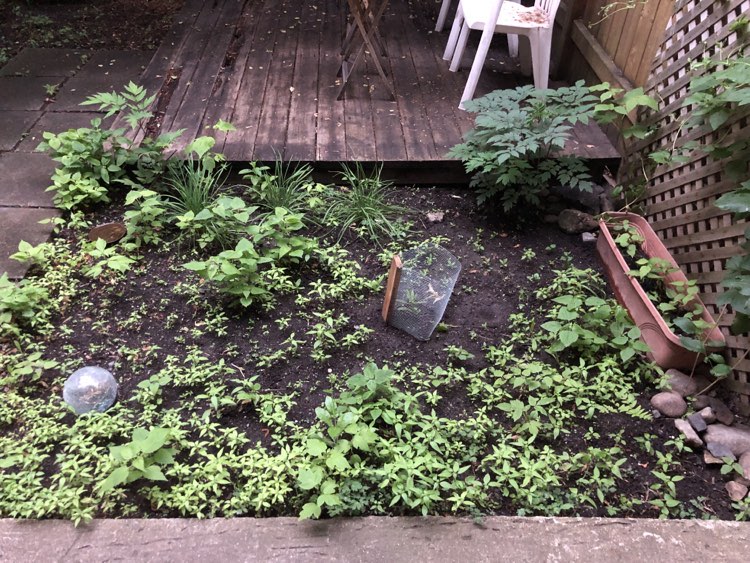
Summer: Digging deeper into native plant gardening
Clara and I were in the native plant zone now. In fact, we attended the Great Gardening Weekend at Montreal's Jardin Botanique for a free workshop from Jardin Buzz about gardening with native plants. This was really excellent programming and we acquired two new plants from it:
- New England aster
- Another foamflower - for redemption!
These additions to the garden made it feel like an ongoing project. And it was sure growing! (In French you say: "Ça pousse!") A few of the plants were exceeding expectations even at the midpoint of summer. The large-leaved aster grew so tall that it was leaning over, so I had to tie its stem to the trellis. And my personal favorite, the spikenard, filled in really nice and wide.
Other touches like a small sign I put up helped it feel like we really did something here. I spent a lot of time working from home out in the garden, where I befriended frequent visitors like neighborhood cats, butterflies, bees, beetles, snails, and yes, even the squirrels.
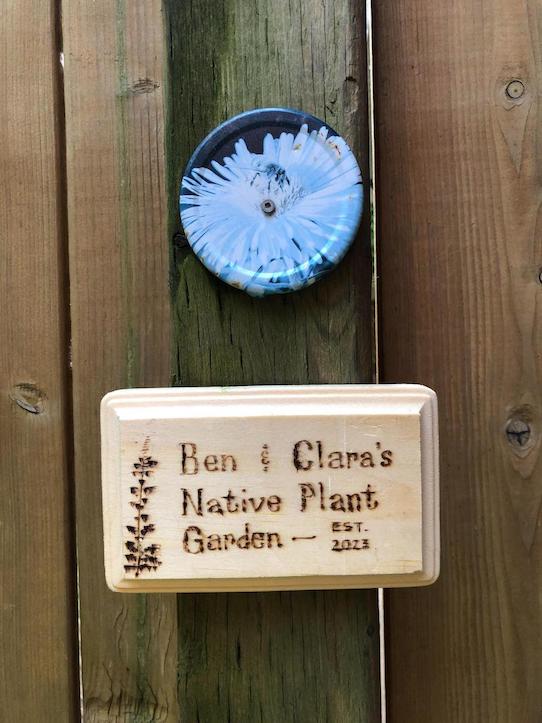

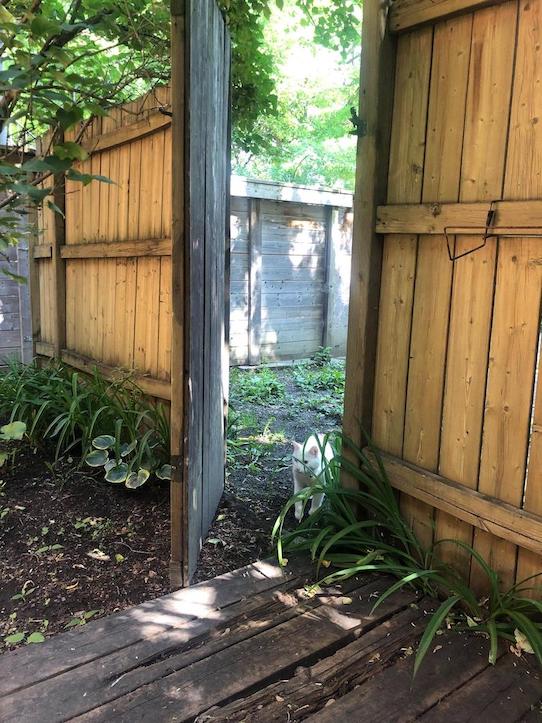
There were still some casualties. The New England aster ultimately died, I think it was unhappy having been transplanted twice, and it may have needed more sun. And the white snakeroot had a problem with ants and aphids. I say problem, but it was only a problem for my garden, while it's actually just a natural relationship which these plants support. That's kind of the perspective that native plant gardening gives you.
Later in the summer, we mulched the garden. I mainly wanted to do this just to clean things up because the topsoil would kind of splash everywhere when it rained, and all my plants would have dried dirt all over them afterward. We got organic mulch though, so that it would leach some nutrients into the soil. I also learned that mulch helps regulate the drainage of rainwater and provides homes for small bugs.
Fall: Results of the garden
I wasn't doing much work by the time fall rolled around: the goal was to just enjoy the garden! A lot of gardening advice I read was to not put pressure on yourself to have a perfect garden. I was satisfied with the work I had put in and the handful of plants that I had really established in my little slice of the world.
Since I missed a lot of the early spring bloomers due to transplanting, I really loved seeing the fall bloomers. The large-leaved aster grew white and yellow flowers, spikenard grew clumps of red berries, and black cohosh grew purple berry stalks. It was awesome to see the diversity among these plants.
During the fall, I threw some soirées to show my friends the garden Clara and I had worked so hard to bring to life! It was especially cool at night to see it with the lights. I also said a bittersweet goodbye to Clara, my undefeated gardening partner, when she moved away at the end of August.
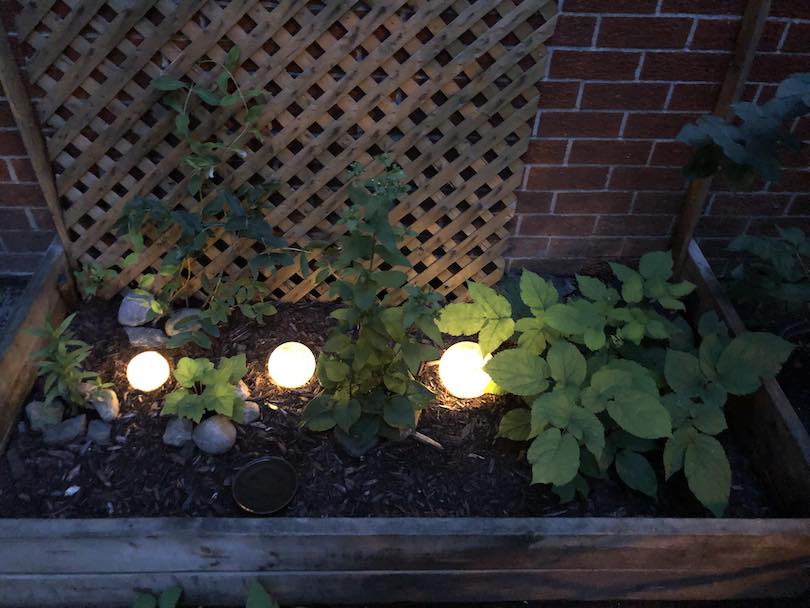

And really, that was a wrap on my gardening for the year!
Profiles of select native plants
What did I actually plant in the garden? I included pretty much everything here except for a few I mentioned above that didn't do well, because I didn't have many photos or details to share about them.
American spikenard
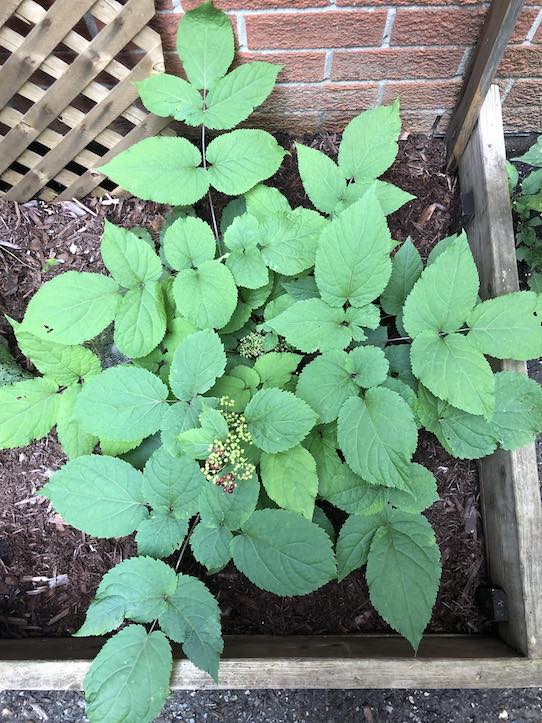

My personal favorite was spikenard. Man this plant was just cool! Huge leaves, and it grew super wide and full. I consider it my most successful plant from this project. In the fall it grew these small red berries. I even got to see it in its natural habitat at the Jardin Botanique, where they have a wooded area for native plants. It felt like meeting a celebrity.
Black cohosh
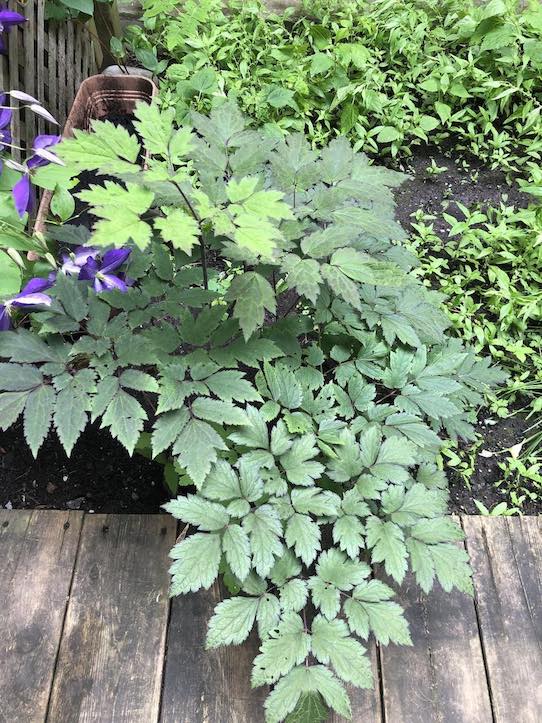
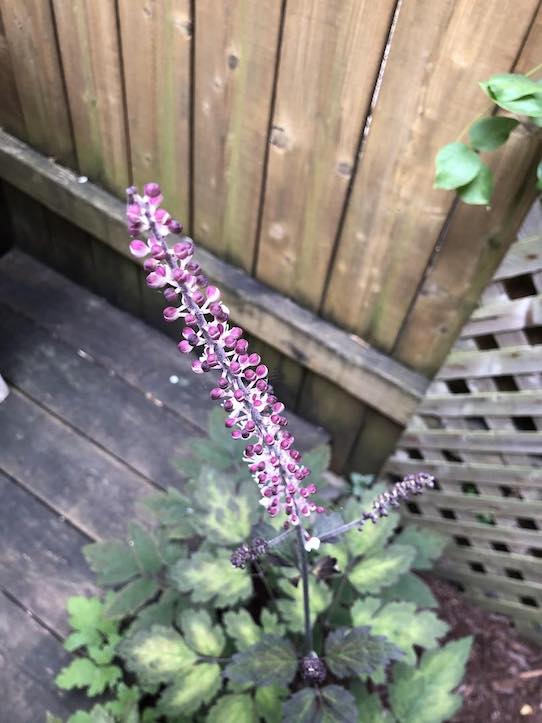
This plant was already growing in my backyard when I moved in. It has these cool bluish leaves. For a while I thought it was white baneberry or doll's eyes, a similar plant, but seeing how it fruited I'm pretty sure it's black cohosh. Incidentally, over the summer I noticed that black cohosh grows in the park near my apartment. Which is super interesting for two reasons. First, it's just neat that the city planted a native species. And second, since it's so close to my backyard (maybe 50 meters), it could have been naturally dispersed into my yard!
Foamflower
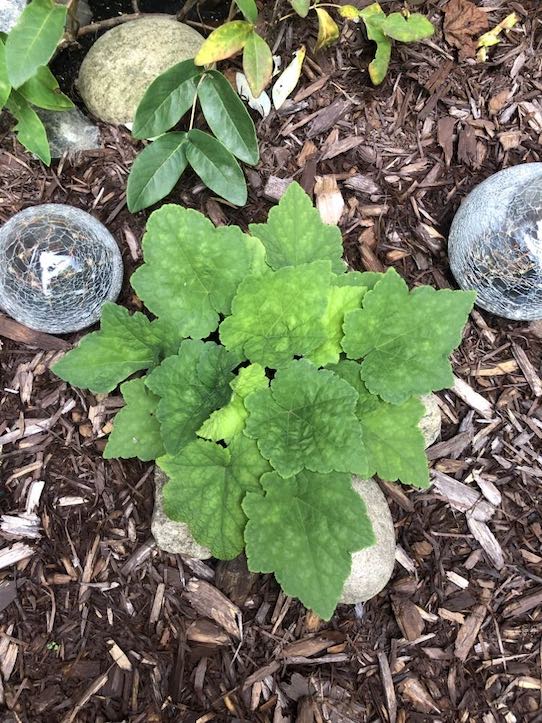
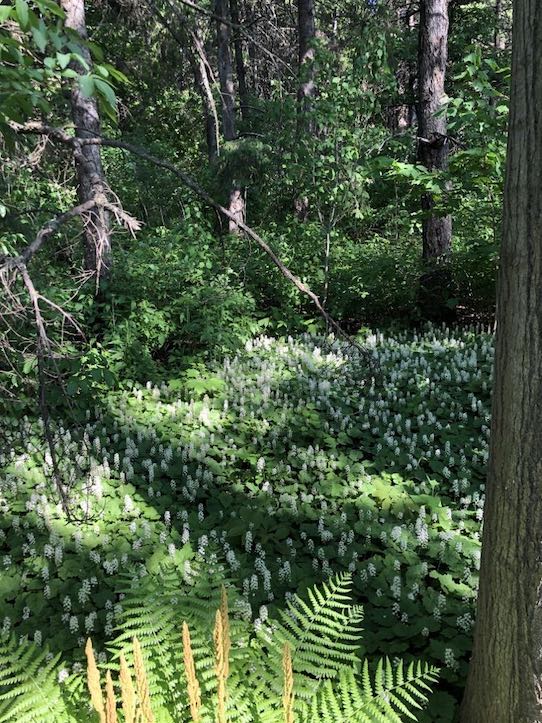
Foamflower is a ground cover plant, so it's short and spreads horizontally. I didn't expect it to spread so much in this first year though. It blooms in late spring and as you may remember, my first foamflower got eaten and then my second one I got around July, so I missed the blooming period. The photo above on the right is from the Jardin Botanique, and all the little white stalks are the foamflower blooming!
Glaucous honeysuckle

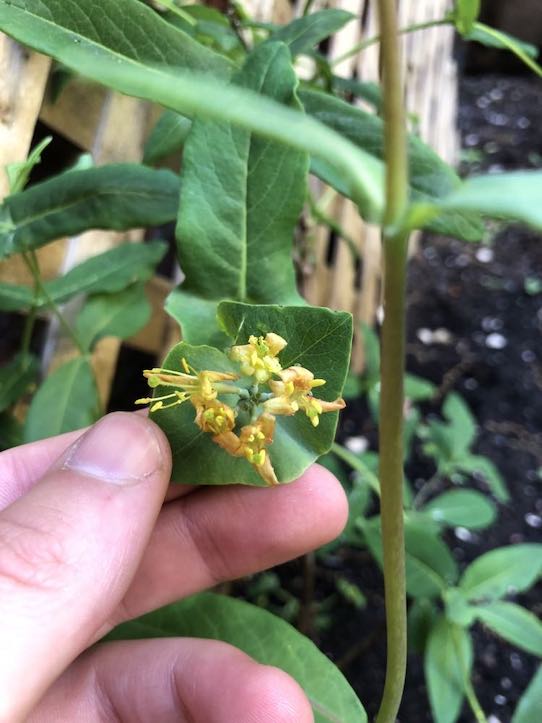
This is a type of native honeysuckle which is more of a climbing vine, so I tried to train it to grow up the trellis. It blooms in the early spring with yellow and red bulbs. I mentioned earlier that it didn't bloom super well after transplanting, but it didn't climb as much on the trellis as I expected either. Maybe next year!
Large-leaved aster
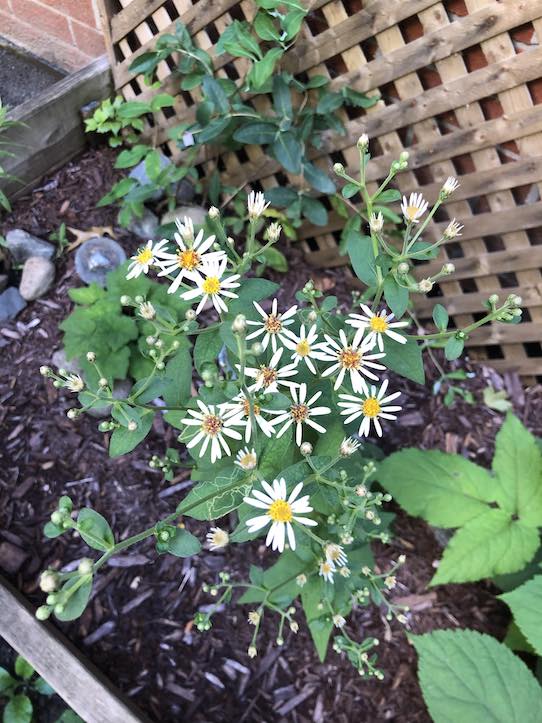

Asters are a common wildflower in Quebec. This variety grew about three feet tall in my garden and bloomed in late summer with pretty white flowers that attracted bees and other pollinator insects. I had to support it when it reached a certain height because it wasn't standing up straight. I would say this is my second most successful plant after the spikenard!
Purple clematis
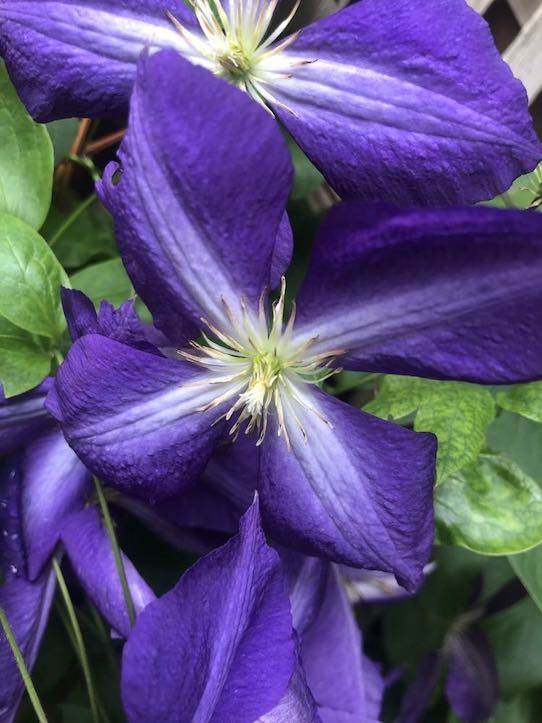

This plant has purple flowers and grows as a climbing vine. It's a variety of Virginia clematis, to my knowledge. It seems to be kind of an elusive species for gardeners, although I've seen it in Montreal a lot honestly. The picture on the right I saw on the sidewalk and had to stop and admire it!
What's next for the garden?
Next year, I will work mostly in the larger plot of my garden, whereas this year I focused on the small planter section. This area is home to the white snakeroot and black cohosh. I would personally love to add more black cohosh or spikenard here as these plants grow large and fill in empty space nicely. I'm also interested in goat's beard which I saw growing in the park near my apartment!
It may be possible as well to propagate plants like the black cohosh by digging up and dividing the root. You can do this because certain native plants have rhizomous roots, so it's kind of like a big knot you can just split into parts. That's a simple way to propagate that I might try.
Finally, from the Jardin Buzz workshop I mentioned earlier, I got a packet of seeds for a native plant called Joe Pye weed. This one is a pretty flashy native wildflower. The thing is, it seems that the flashier a native species is, the more it generally needs a lot of sun, and my backyard is way too shady for Joe Pye weed. So, I think I will plant the seeds in front of my apartment where I have a small plot by the sidewalk.